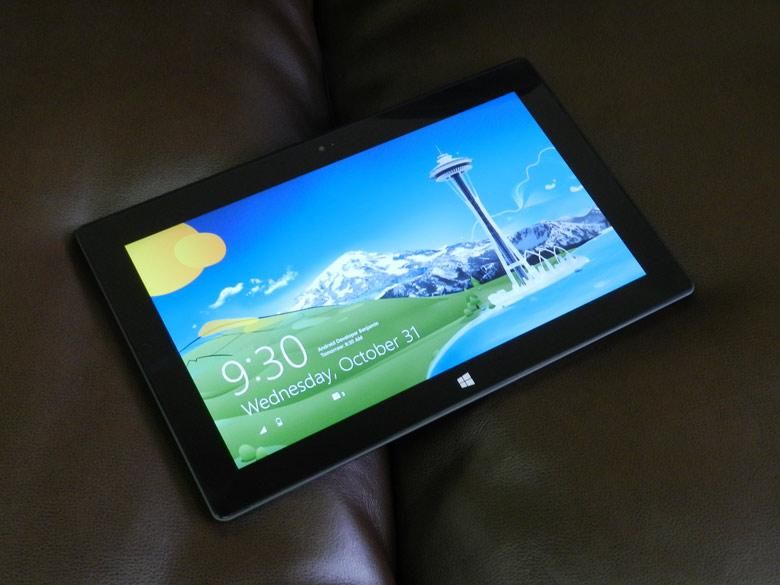Windows RT is difficult to explain, so this video is our best effort to show you how it works and how it's different. But here's a summary: Windows RT is a tale of two worlds. One, the desktop world, that looks like a Windows desktop, but isn't, because no apps can be added to it. The apps that it comes with (IE 10, File Explorer, Word, PowerPoint, Excel, and all other built-in Windows apps like Calculator, Notepad, Control Panel, and yes, even Paint) are the apps you are stuck with. If you try to install Photoshop, Spotify, Chrome, or any other executable made for x86-powered computers, you'll get an error message. So what's the desktop good for, you might ask? It's best suited for more advanced tasks like accessing USB flash drives, managing files, and working with advanced system settings. Also, in desktop mode, finger-input becomes impossibly frustrating, as check boxes, tabs, and small links are just too tiny to be accessibly with a fingertip.
The other world is the Windows 8-style environment, which used to be called Metro. That's where you get the live tiles that feels very much like a bigger Windows Phone UI (which isn't a bad thing). In this world, you can customize your tiles into groups and change their sizes. This environment also has some innovative multitask solutions. For example, you can swipe in from the left to quickly revert to a previous app. Oddly, you cannot do this in reverse like you can on the iPad. Then, you can access a Windows 8-style taskbar by swiping from the left, then swiping back the other way. It seems convoluted to access some of these areas, but it actually becomes very natural. What's more, you can place two apps side-by-side with an adjustable bar in between. This is super useful in scenarios when you want to do two things at once. It's handy.
While the Windows 8-style world is beautiful, fluid (save for some performance issues), and innovative, it's scarily lacking in apps. It's scary because the functionality of the Surface RT (and all Windows RT devices) is severely limited. How long will it take to get a well-rounded app store? One year? Two? It took Windows Phone a good year and a half before its app catalogue reached parity with Android and iOS. Will developers bite? It's impossible to know with Windows 8.
Now, of course, tablets running Windows 8 Pro will be much better because while they'll still have the "missing apps" problem, you'll get the full desktop experience and will be able to run each and every desktop app you run today on your desktop or laptop.
What do you think about Windows 8 RT?

